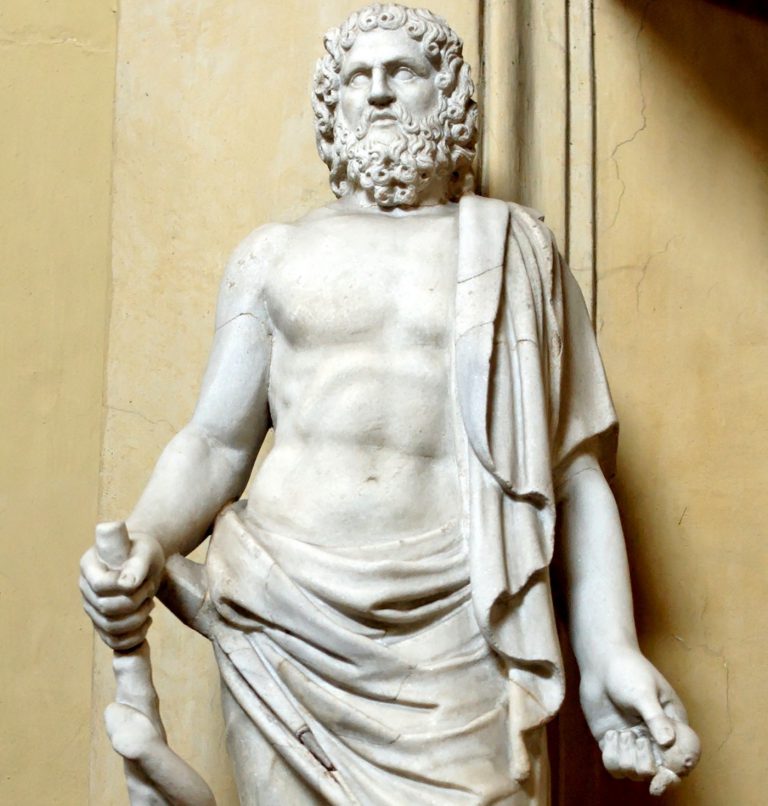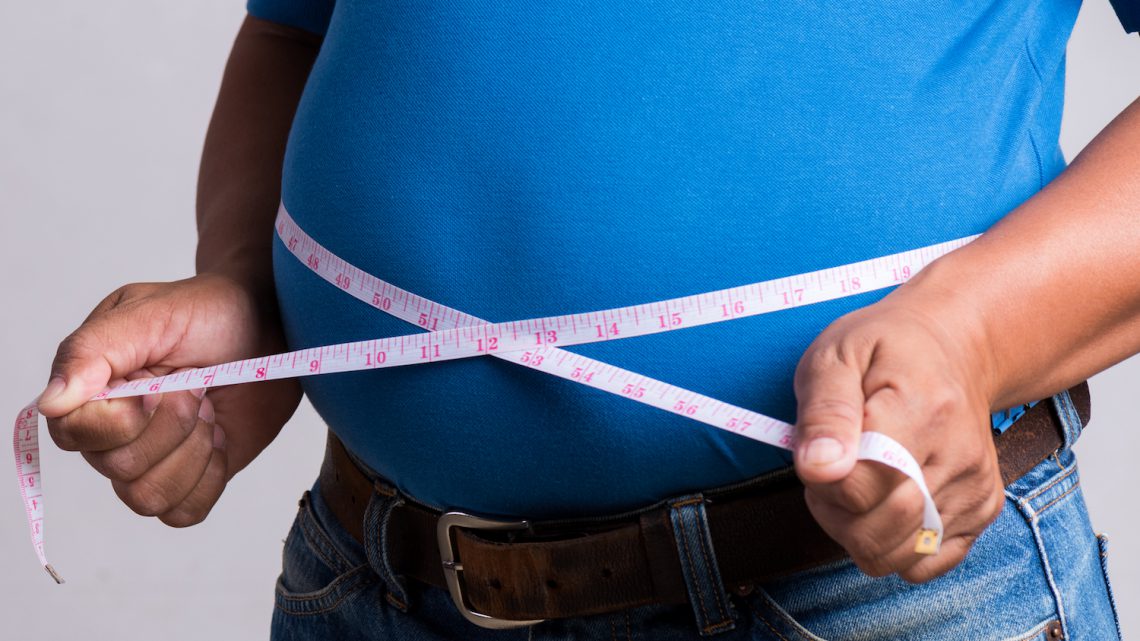Updated on 23. November 2021 from ÁYIO-Q Redaktion
Reading time: approx. 6 minutes
Explanation of the clinical picture of obesity / adiposity
Obesity (adiposity) has become a widespread disease. According to the World Health Organization, 2.8 million people die each year as a result of obesity and overweight
Obesity and overweight are not the same thing. Overweight means that the person concerned weighs more than the ideal body weight for his or her size and age. Obesity means very overweight with a pathologically increased body fat percentage. The body mass index (BMI) is used as a benchmark. It is calculated from the body weight divided by the body height to the power of two. With a body weight of 80 kilos and a height of 1.85 meters, the BMI is 80: (1.85 x 1.85) = 23.37. Overweight starts with a BMI of 25, obesity starts with a BMI of 30.
Obesity is not a beauty problem. It is a serious disease that burdens the entire body and is associated with reduced performance, shortness of breath and numerous consequential damage to the liver, amongst other things. The body has to carry an increased load, which not least damages the joints. The fat pads need to be supplied with oxygen and nutrients. They also emit neurotransmitters, which in turn have a negative impact on the metabolism and many other body functions. Since more tissue has to be supplied with blood, the risk of cardiovascular diseases increases. In addition, those affected often suffer from heartburn, sleep apnea, varicose veins and naturally pronounced psychological impairments such as lack of self-confidence, anxiety disorders and depression.
If obesity is not counteracted, sequelae diseases such as type 2 diabetes mellitus, fatty liver and fatty tissue disorders. For the risk of a sequelae disease, the fat distribution on the body is decisive, and here in particular the abdominal fat percentage. The incidence of heart disease, stroke and type 2 diabetes mellitus increases in women with a waist circumference of over 80 cm and in men over 94 cm. If a woman has a waist circumference of over 88 cm and a man over 102 cm, the risk increases considerably.
The causes of obesity and overweight are not only due to poor diet and lack of exercise. The embossing of eating behaviour during the childhood also plays a role. In addition, genetic predisposition, slowed metabolism and various illnesses can trigger the disease. The exact mechanisms that lead to obesity are still not fully understood. However, the disease seems to take on a life of its own over time. Once the body has put on fat pads, the bigger they become, the stronger it defends them.
Treatment methods of obesity of the different medical disciplines
The goal of any overweight or obesity treatment is permanent weight loss. The basis is a change in diet and an adapted exercise and behaviour program. Conventional and alternative medicine go different ways.
Conventional medicine for obesity: weight loss programs, medication, surgery
Conventional medicine has developed programs that include the elements of nutrition, exercise and change in behaviour. The German Nutrition Society (DGE) recommends a balanced mixed diet for weight loss, taking into account the calorie density. It is particularly important to control fats and carbohydrates. Formula diets, in which meals are replaced by special drinks, also promise success. The effectiveness has been proven by studies, but the long-term success is not. There are now computer-aided programs that can be carried out independently. Some of them are recommended and paid for by the health insurance companies. Initial studies indicate that programs with online assistance can actually help with weight loss. Change of food and exercise usually work well as part of a cure in a clinic, in which the patients are looked after and instructed around the clock. Back in their own four walls and in the everyday stress of work, family and the environment, however, they fall back into old patterns and then usually gain weight faster than they have lost.
If sufficient weight loss is not achieved, drugs are used that, for example, inhibit the absorption of fat in food or curb the appetite. However, all drugs have significant side effects. In this way, appetite suppressants not only combat hunger, but also thirst and the need for sleep. Medications that decrease fat absorption can cause diarrhoea, gases, and even gallstones. Studies have shown that four out of 100 patients stopped taking these drugs prematurely because of the unpleasant side effects. This also applies to radical diets. They are usually associated with renunciation and are often associated with a lack of essential nutrients.
In conventional medicine, surgery is the last resort in the fight against obesity. It is only suitable for people with significant obesity and other conditions such as diabetes. The methods available are gastric banding, stomach reduction and so-called gastric bypass, which is stomach reduction in connection with a shortening of the digestive tract. However, even an operation subsequently requires a change in eating and behavioural habits and, like any surgical intervention, is associated with considerable risks.
Alternative medicine for obesity: Holistic approach with numerous support measures
Alternative medicine also takes a holistic approach to obesity and overweight. The focus is not only on being overweight and its physical impairments, but on the overall situation of people in their environment.
In addition to a balanced nutrition and regular exercise, naturopathy knows a number of supportive measures. This includes physical therapy. It uses a cold stimulus that induces special fat cells in the body to generate heat and thus burn fat. Kneipp therapy can also help you lose weight. Alternating baths and cold showers stimulate blood circulation and thereby increase calorie consumption. The effectiveness of acupuncture and hypnosis for weight loss has also been proven in studies. However, the treatment is lengthy and results in only a small loss of weight. Phytotherapy takes a different approach. It uses herbs and medicinal plants to alleviate physical and mental ailments. Phytotherapy is also used in Ayurvedic medicine and balneotherapy, which focuses on therapeutic bathing.
With drainage procedures, toxins are to be excreted and the composition of the body fluids harmonised. Indian Ayurveda knows the principle under the term “Panchakarma”. Bloodletting, leeches, and cupping are the most popular methods. But also purging and therapeutic fasting are included. During therapeutic fasting, the body accesses all usable energy suppliers, including the waste materials in the cells. The process is called autophagy and begins after a 14 hour fast. The longer the fasting period, the greater the “waste disposal”. Intermittent fasting also makes use of this principle.
Traditional Chinese medicine sees the cause of improper eating behaviour in a communication problem in the body. The feeling for the required amount of food is disturbed. The therapy therefore focuses on the restoration of the natural feeling of hunger and satiety and the detoxification of the tissue.
Anthroposophic medicine focuses on the unity of body, mind and soul. Anthroposophy means “wisdom from man”. All human levels are included. Typical procedures such as rhythmic massage, movement therapy, biographical orientation or art therapy are used. In addition, herbal, animal, mineral and metallic preparations are available that are supposed to develop spiritual powers.
The unity of body and mind is also the focus of the ÁYIO-Q Center for Vitality. Based on the knowledge of medical teachers such as Hippocrates and Aristotle, which is over 2,000 years old, the team of experts has developed special programs that can help restore vital energy and self-healing powers. A free test was specially created for this purpose, which uses simple questions to record the current physical and mental state of health and, as a result, provides valuable information on how life energy and self-healing powers can be strengthened. The successes speak for themselves. 94 percent of the participants rate ÁYIO-Q positively and 78 percent recommend the programs to others.
Related articles: Obesity / Adiposity
- Adiposity (Obesity) – Medicinal plants, vitamins and minerals as weight loss helpers
- Adiposity (Obesity) – The psyche is of far-reaching importance
Sources:
[1] World Health Organization (WHO): Volkskrankheit Adipositas, Access date 01.06.2021
[2] Body Mass Index: BMI-Rechner und Bundeszentrale für gesundheitliche Aufklärung, Access date 01.06.2021
[3] Adiposity disease: IFB Adipositas Erkrankungen und Deutsche Adipositas Gesellschaft, Access date 01.06.2021
[4] Health Knowledge Foundation: Ursachen für Adipositas, Access date 01.06.2021
[5] Weight loss programs: Deutsche Gesellschaft für Ernährung e.V. und Deutsche Gesellschaft für Ernährung e.V., Access date 01.06.2021
[6] Medikamente: Gesundheitsinformation, Access date 01.06.2021
[7] Operation: Gesundheitsinformation, Access date 01.06.2021
[8] Appetite suppressants: Ärztezeitung, Access date 01.06.2021
[9] Phytotherapy study: Naturmed Depesche, Access date 01.06.2021
[10] Acupuncture and hypnosis: Informationen zur Gesundheit, Access date 01.06.2021
[11] Cold stimulus: Fit for Fun, Access date 01.06.2021
[12] Eliminatory proceedings: Naturheilkunde, Access date 01.06.2021
[13] Chinesische Medizin: Gesundheitswissenschaften, Access date 01.06.2021
[14] Anthroposophic medicine: Phytodoc, Access date 01.06.2021















